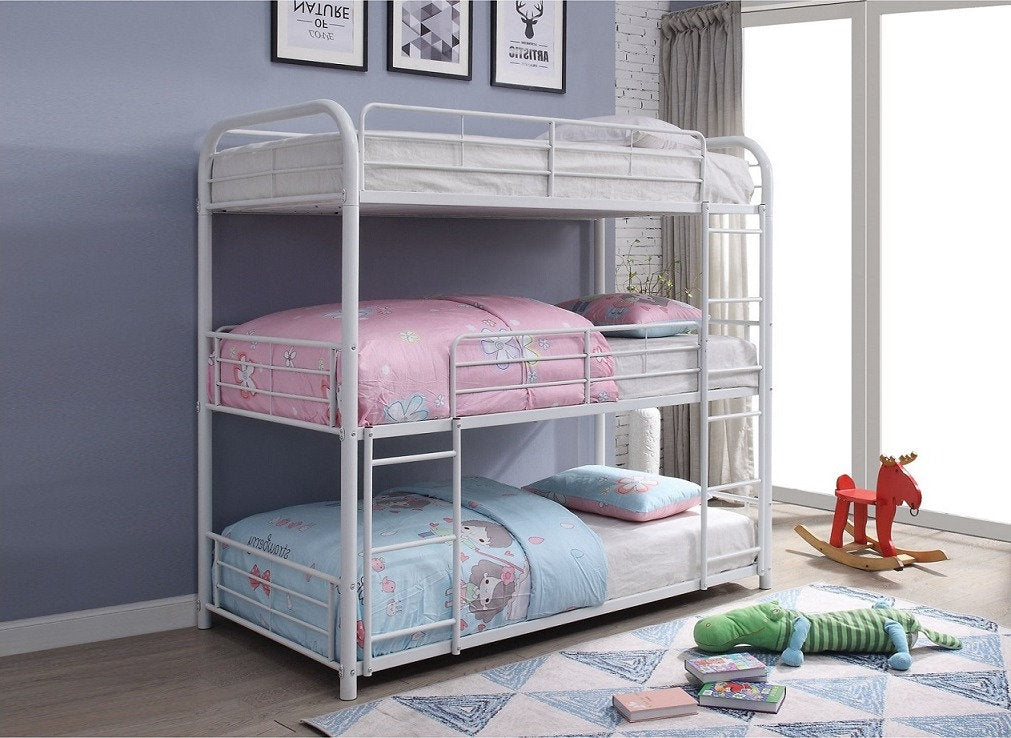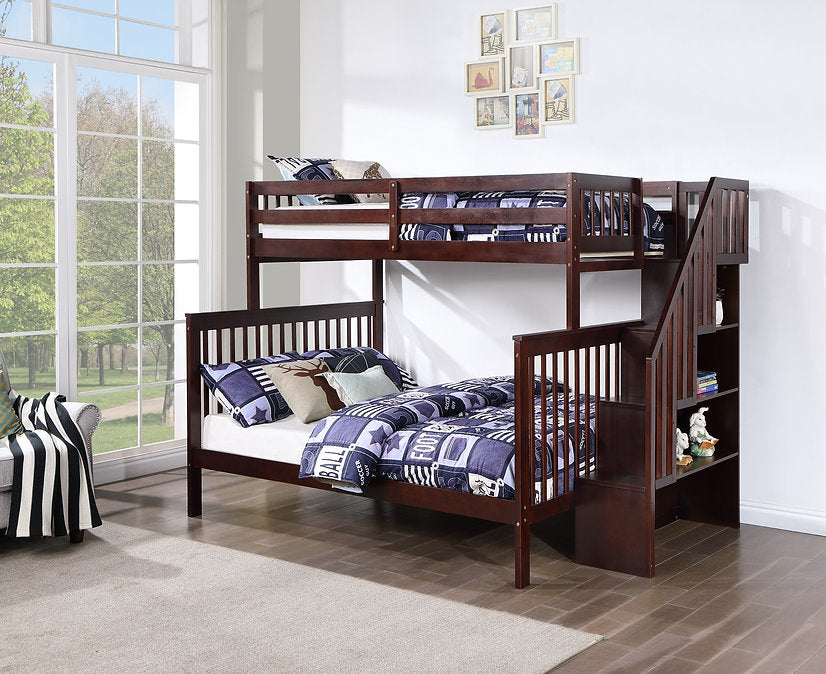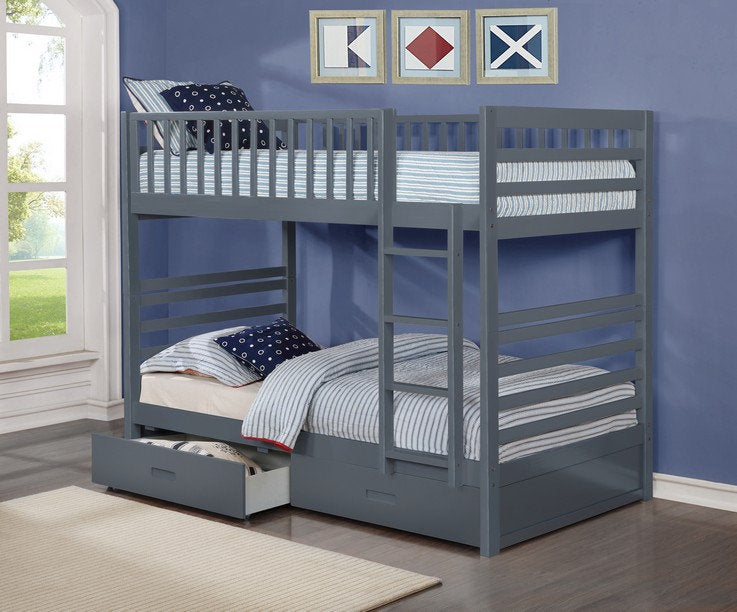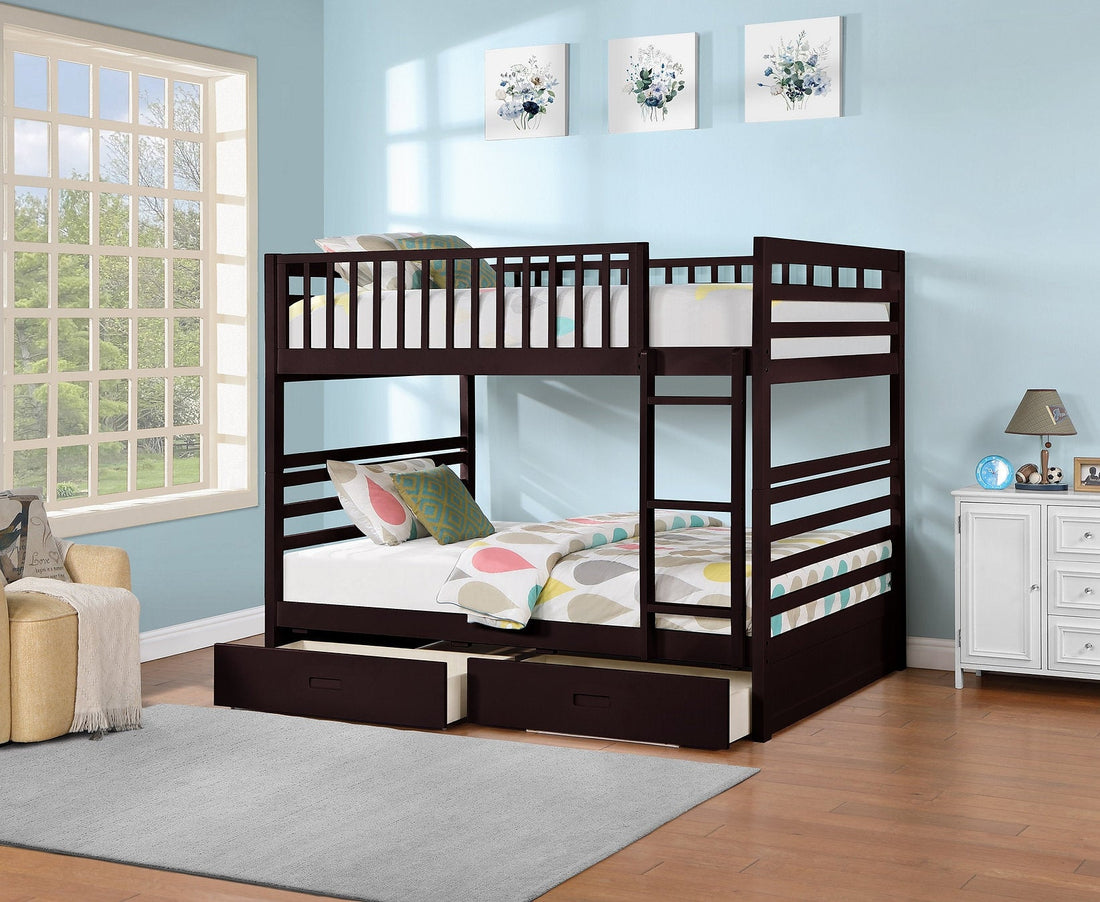When it comes to furnishing a child's bedroom, especially one shared by siblings or constrained by space, bunk beds emerge as a compelling choice. They allow you to stack two sleeping surfaces vertically, freeing up precious floor area for play, desks, or storage. But as with any investment in furniture, choosing the right bunk bed requires careful thought. In this guide, we'll walk through everything you need to know—from sizes and safety to materials and layout—so you can choose confidently (and sleep better at night).
Why Consider a Bunk Bed (Especially Twin Beds)?
Before diving into the technicals, it's worth reflecting on what makes bunk beds—and specifically twin beds in bunk form—so popular:
- Space efficiency: A bunk bed allows two children to sleep in the same "footprint" as one standard bed. This is ideal for small rooms.
- Cost savings: Buying one frame with dual beds often costs less than buying two separate beds of similar quality.
- Fun & bonding: Many kids enjoy the novelty of a bunked layout—especially the top bunk. It can feel like a mini adventure.
- Flexibility: Some bunk beds (especially twin-over-twin models) can later be separated into two standalone beds, giving you longevity as children grow.
That said, bunk beds aren't for every scenario—so let's get into the details you should consider before deciding.
Key Considerations Before You Buy
1. Measure Your Room (Including Ceiling Height)
Start with the basics: get precise measurements of the room. That includes:
- Floor dimensions (length, width)
- Ceiling height
- The height of features like light fixtures, fans, or moldings
If the top bunk is too close to the ceiling, the occupant might bump their head or feel cramped. A general rule is to allow at least 30 inches (≈ 75 cm) of clearance between the top of the mattress and the ceiling.
Also, consider the layout: where are the windows, closets, doors, and ventilation systems located? The bunk bed should not obstruct movement or access to other furniture.
2. Pick the Right Size & Configuration
While twin beds are a widespread choice in bunk designs, it's not the only option. Here are standard configurations:
- Twin-over-twin: Two twin beds stacked. This is the standard in many kids' bunk beds.
- Twin-over-full: Twin on top, full (double) on bottom—useful if one child is older or for sleepovers.
- Full-over-full (less common in kids' rooms, sometimes used in adult/teen settings).
- L-shaped bunk: The top bunk is perpendicular to the bottom, forming an L shape. Helpful to tuck into a corner.
- Triple bunk: Three levels—used in special settings like vacation homes or guest rooms.

Bunk bed- 3 Beds
3. Choose Materials & Build Quality
Not all bunk beds are created equal. Quality, durability, and safety depend heavily on the materials and construction.
- Solid wood (e.g., pine, maple, oak) gives a warm, sturdy, durable feel. It is easier to repair or refinish over time.
- Engineered wood / MDF / plywood often costs less, but may degrade more quickly or show wear more visibly.
- Metal frames offer a sleek look, are typically lighter to move, and resist warping. The trade-off is that noise (such as creaking) or sharp edges might be more of a concern.

Bunk Bed B-1850 (Single/Double)- Reversible Stairs
Avoid flimsy particle boards or thin materials that flex under load. Many design experts emphasize the importance of avoiding cheap designs in favor of sturdier construction.
Check how the frame connects (bolts, screws, brackets). Reinforced corners, thick support slats, and cross bracing enhance sturdiness.
4. Safety First: Guardrails, Ladder/Stairs & Weight Limits
When kids' sleep is involved, safety is non-negotiable.
- Guardrails: The upper bunk should have guardrails on all open sides, with a minimum height of at least 5 inches (≈ 12 cm) above the mattress surface. The spacing between slats should be narrow enough to prevent entrapment.
- Ladders or stairs: Decide whether you prefer a ladder or built-in stairs. Stairs are often easier for younger children and safer, but they require more space to navigate. Ladders are compact but can be trickier for small kids.
- Weight capacity: Ensure the bunk bed supports at least the combined weight of a grown child plus mattress, ideally with room to spare. Top bunks often have lower weight ratings than bottom ones.
- Age guidelines: Many safety guidelines recommend that children under 6 years of age should not use the top bunk.
- Standards and testing: Where applicable, verify compliance with safety standards and confirm whether the manufacturer tests the bed for structural integrity.
5. Access & Usability
- Can the ladder or stairs be placed on either side (versatility)?
- Is there enough space to change the bed sheets comfortably?
- Will the bottom bunk's head area be partly blocked by the ladder/stairs?
- For maintenance: are connectors (screws, bolts) accessible? Are spare parts available?
6. Storage & Additional Features
Many bunk beds offer built-in features to maximize usability:
- Drawers under the bottom bunk
- Shelves or cubbies on end panels
- Trundle beds (a pull-out third bed stored beneath)
- Integrated desks on the lower level
- Convertible designs that allow the bunk to become two separate beds later

Bunk Bed -B-110 (Single/Single)
These features add versatility and are especially useful in tight spaces or as children grow.
7. Finish, Style & Room Aesthetic
While function is key, appearance matters. A bunk bed should harmonize with the room decor (wall colors, other furniture, lighting).
- Choose finishes or stains that resist scuffs (kids are tough on furniture).
- Neutral colors (white, gray, natural wood) tend to last longer stylistically.
- Contrasting or themed designs (e.g., castle, nautical, treehouse) appeal to younger children but may feel limiting as they grow older.
- For resale or reuse, go for timeless styles rather than overly trendy ones.
8. Budget & Longevity
Because bunk beds span a wide price range, it's easy to be lured by low-cost options. But a low price often means cutting corners in materials or safety.
- Set a realistic budget that allows you to purchase a solid and safe bed.
- Please consider the bunk bed as a long-term investment: ideally, it should serve until the kids outgrow it.
- Factor in shipping costs, assembly (labor or your time), and potential maintenance.
- Sometimes, a mid-range bed with good materials and features will save more in the long run than the cheapest option.
Sample Buying Flow: How You Might Proceed
Below is a hypothetical decision-making path you can follow when shopping, using what we've covered:
- Measure your room and determine your maximum allowable bed height (ceiling clearance).
- Choose your configuration (twin-over-twin, L-shaped, etc.) based on the available space and the number of children who will use it.
- Decide your material preference (wood vs. metal) based on aesthetics, durability, and budget.
- Compare safety features, including guardrail heights, ladder or stair design, and weight capacity.
- Look at additional features (drawers, shelves, trundles) and factor in whether they make sense for your room layout.
- Evaluate Cost vs. value: make sure you're not sacrificing safety or quality to save money.
- Check the warranty, parts availability, and assembly instructions.
- Once selected, plan the delivery and installation, and finally enjoy the new functional space.
- Regularly tighten screws and bolts (vibrations over time can loosen connections).
- Inspect guardrails, ladders, and slats regularly for signs of wear or damage.
- Use fitted sheets and low-profile mattresses to maintain the effectiveness of the guardrail.
- Place the bunk away from fans or light fixtures.
- Educate children on how to safely use ladders or stairs (no jumping, no leaning over rails).
- Avoid allowing more than one child to sleep on the top bunk, and never permit rough play in that area.
- Place the top bunk closer to a wall to minimize the risk of an open side.
- Clean surfaces with gentle cleaners; avoid soaking wood or exposing metal joints to moisture.
Where to Shop
You can find bunk beds in many furniture stores and online retailers. Suppose you're in the area, or shipping is feasible. In that case, stores like Nova Furniture Mall offer curated selections of kids and teen furniture, allowing you to see build quality, finishes, and features in person.
Checking local stores also helps with after-sales support, warranty service, and easier logistics for delivery/installation. When visiting showrooms, be sure to test the bed's sturdiness, try climbing the ladder, and inspect the finish quality.
Final Thoughts & Summary
Choosing bunk beds for kids (especially using twin beds) is more than just picking a fun design. It's a balancing act between safety, functionality, and aesthetics.
- Measure carefully (especially ceiling height).
- Select a configuration that suits your room and needs (a twin-over-twin setup is typical).
- Opt for high-quality materials and construction—such as solid wood or well-built metal.
- Don't compromise on safety features, such as guardrails, ladder design, and weight limits.
- Maximize utility with a storage or convertible design when possible.
- View options in showrooms if possible to better assess the build.
- Maintain the bed with periodic checks and proper usage.
With a bit of planning, you can find a bunk bed that keeps your children safe, provides them with a cool place to sleep, and frees up floor space for play or studying.




